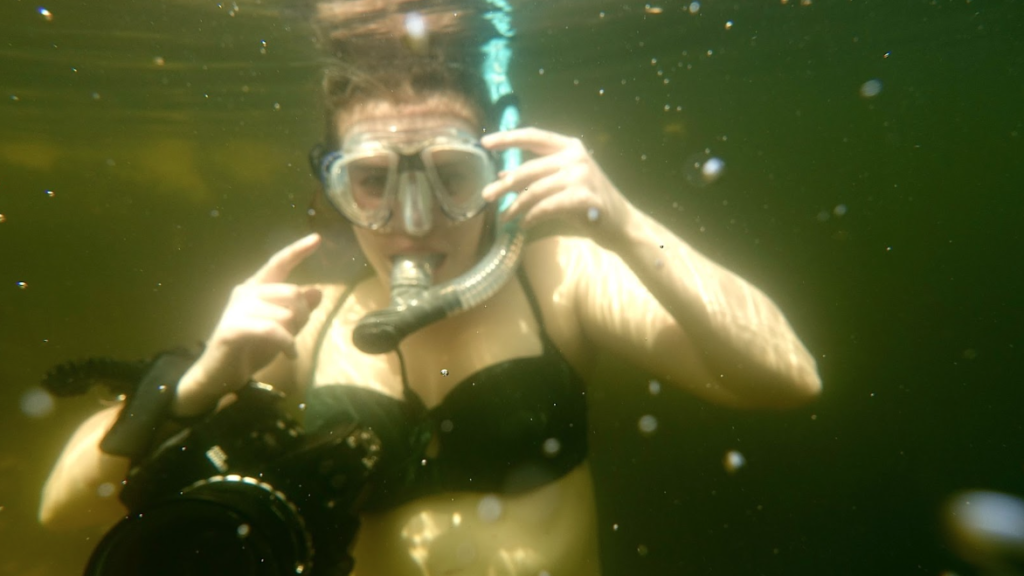Exploring Blue Holes on Andros Island: Bahamian Summer Study Abroad

Ana Sapp and Sydney Walters received Forestry and Environmental Resources departmental scholarships to conduct research on blue holes in Andros Island, The Bahamas in June 2022. This project was part of the Bahamas: Ecology, Evolution, and Human Dimensions of Conservation Biology study abroad trip directed by Dr. Brian Langerhans and Dr. Nils Peterson.

Andros Island, the largest of the Bahamian Islands, is home to over 300 blue holes. These blue holes are anchialine caves formed by karstic rock. Their unique formation causes them to be a hotspot for biodiversity and allows them to harbor rare species. Blue holes are also an important water resource and source of tourism for local communities. The study abroad trip, made up of NCSU undergraduate students, two graduate students, and the two faculty directors, aimed at increasing the relatively limited body of blue hole conservation research from both an ecological and human dimension perspective.
Although the trip to Andros Island was for two weeks the project really lasted the whole summer, said Walters. Before leaving for the Bahamas, students gained background knowledge about Andros Island through assigned readings and then were required to write project proposals. “The point of the class was to create a research paper,” said Walters.
From the pre-trip research and planning meetings, two projects emerged: one project focused on collecting baseline blue hole data and one project focused on evaluating blue-hole ecotourism. Walters, a senior in the Environmental Science program and Sapp, a senior in the Fisheries, Wildlife, and Conservation Biology program were both part of the nine person team collecting baseline data.
Once in the Bahamas, Dr. Langerhans and Dr. Peterson gave nightly lectures to provide the students with further background knowledge about island ecology and culture. The team was first introduced to blue holes by visiting a few tourist friendly blue hole locations such as Uncle Charlie’s and Captain Bill’s but quickly adjusted to arduous days of field work. While in Andros, the baseline data team visited 17 blue holes to collect data for dissolved oxygen, turbidity, fish density, and pH, identify wildlife, and document aquatic plants and cave features.
The team had to drive up to an hour and half to get to some of the blue holes and then hike in from the road. Team members carried heavy research equipment across limestone deposits and through muddy knee-high water. Walters said at one point the mud even swallowed one of her shoes. “I was already knee-deep in the mud at that point and carrying gear, and I had to reach down into the mud up to my shoulder in mud, trying to feel around for my shoe in the marsh,” said Walters
While trying to keep their footing, the team also had to be cautious of poisonwood — an extremely toxic and common plant in the same family as poison ivy (Anacardiaceae). “Even though it was like ninety degrees out, we were all wearing pants and long sleeves,” explained Sydney.

Using the data they collected, the team has drafted a report which they hope to publish in the future. “With this data we can make greater decisions and policy to prioritize the conservation of the blue holes along with future researchers being able to use that data. The more we know about a natural area, the more likely we will be able to preserve it,” said Sapp.

While sampling blue holes, the team had the opportunity to observe many wildlife species unique to the Bahamas. As an avid “herper” and photographer, Sapp was particularly excited to see the Bahamian Rock Iguana. When other team members first spotted the iguana, Sapp was still collecting data in the bluehole. “I was in the water and I was like, ‘no, I’ll never be able to see it. This is my only chance in life,’” said Sapp. Fortunately, the iguana was still there once Sapp finished her work in the water. “It was beautiful. It’s like all these colors, it was also huge. I did not think iguanas would be that big. I’d seen a couple Florida ones from our like Florida trip for herpetology club, but this one was unreal” said Ana.
The group was also exposed to a wide variety of tropical fish and coral through two coral reef snorkeling days. Students were taught identification techniques, were given time to explore, and completed identification quizzes along the way.

The coral reef experiences were special to both Walters and Sapp. “The most surreal thing was definitely the coral reefs. We went to a few different coral reefs, and I swear I didn’t even process it until it was nighttime,” said Walters. Sapp said she is interested in returning to Andros Island specifically for the coral reefs.
The trip was an important professional experience for Walters and Sapp, as they both want to do research in the future. “I really want to go into research. And as this was a study abroad focused on collecting data, exploring different ways to collect data, and really going through the whole process of writing a research paper and doing formal academic research. This was definitely right up my alley” explained Walters. Sapp is particularly interested in tropical ecology and described this study abroad as “a great starting point.”
- Categories: